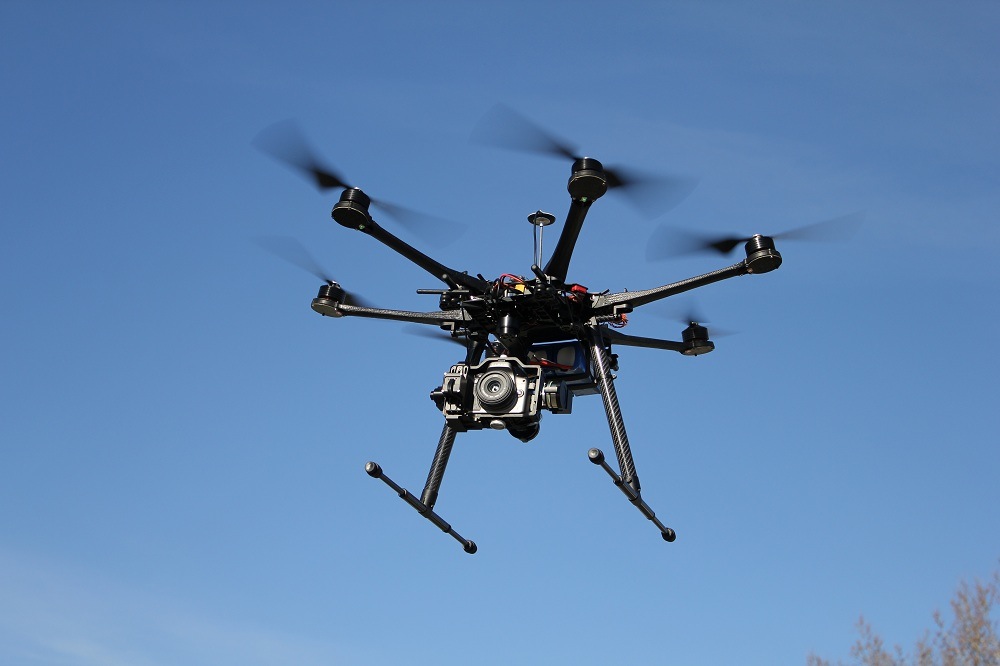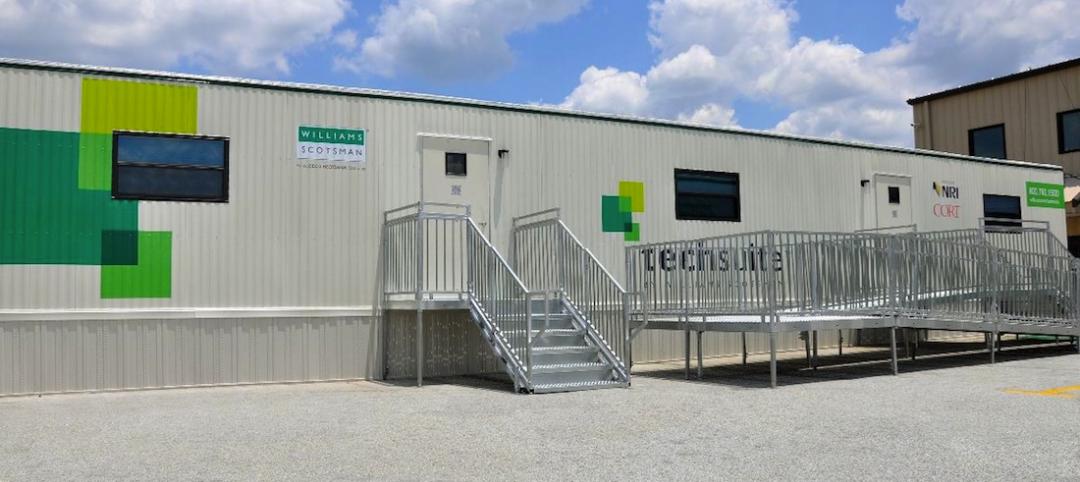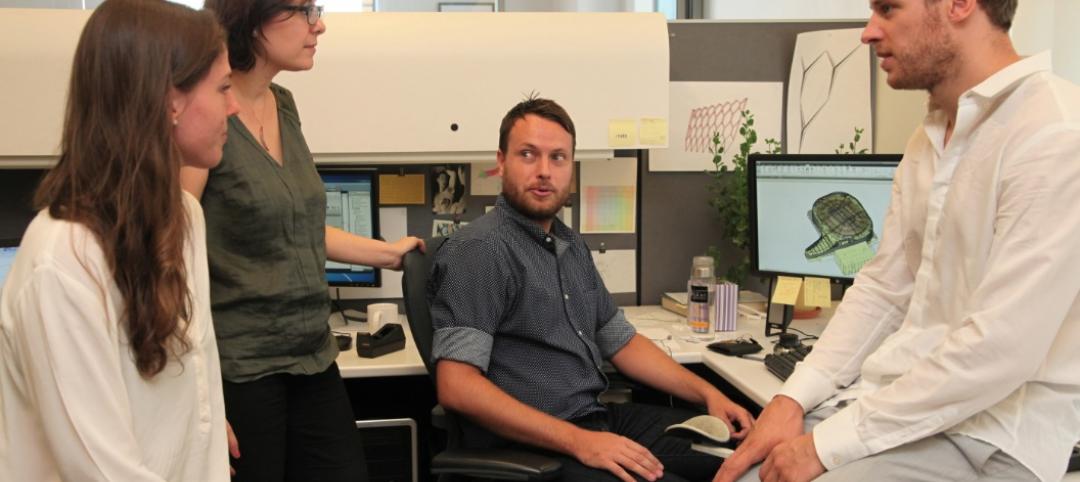Later this month, construction is scheduled to begin on the country’s first business park specifically for unmanned aircraft.
The Associated Press reports that the first order of business for Grand Sky Development Corp., the park’s manager, will be building an eight-foot-high security chain link fence, with barbed wire at the top, to surround 200 acres adjacent to the Grand Forks Air Force Base in North Dakota.
Last week, the 1.2-million-sf Grand Sky aerospace technology park—one of six sites designated by the Federal Aviation Administration for drone testing—was awarded $5.6 million from the state. North Dakota has already invested more than $30 million at this park, which recently added Northrup Grumman as its second anchor tenant, along with General Atomics. North Dakota’s legislature has appropriated $4.4 million for Grand Sky’s future development.
The contract for constructing the fence, which had been planned since 2011, was awarded to Grand Forks-based iconHD, whose parent company is ICON Architectural Group.
Thomas Swoyer, Jr., Grand Sky Development’s president, says the fence is “symbolic,” in that it will “define the park space and give us the ability to control our own access to it.”
General Atomics has signed a tentative agreement to establish an unmanned aerial systems training academy at the park.
In the summer of 2014, FAA announced the selection of the six public entities that would develop unmanned aircraft systems (UAS) research at test sites around the country. One of these is the North Dakota Department of Commerce, which was issued a Certificate of Waiver or Authorization (COA) to begin using a Draganflyer X4ES small UAS at its Northern Plains Unmanned Aircraft Systems Test Site.
Other drone test-site operators include:
• The University of Alaska, which was issued a COA that authorized flights by an Aeryon Scout small UAS for animal surveys at the university’s Pan-Pacific UAS Test Range Complex in Fairbanks. That authorization encompasses test ranges in Hawaii, Oregon, Kansas, and Tennessee.
• The State of Nevada, which was authorized to test an onsite ScanEagle drone at the Desert Rock Airport located in Mercury, Nev. Desert Rock Airport is a private airport owned and operated by the Department of Energy. The ScanEagle flies at or below 3,000 feet.
• Texas A&M University–Corpus Christi plans to develop safety requirement for UAS vehicles. It is authorized to use an AAAI RS-16 UAS, which weights about 85 pounds and has a wingspan of almost 13 feet.
• Griffiss International Airport is authorized to test at a site in Rome, N.Y. One drone is a PrecisionHawk Lancaster Platform UAS that weighs about three pounds and has a wingspan of four feet. Texas-based HoverStat, which develops technology to use small drones for measuring roofs for solar panel installation, reportedly decided to choose Syracuse as a testing location because the Rome site was nearby.
• Virginia Polytechnic Institute is conducting failure mode testing with a Smart Road Flyer, a low cost, low risk multi-rotor UAS being developed to support research in vehicle and highway systems. Other UAS models being tested include an eSPAARO, Aeryon Sky Ranger, MANTRA2, Sig Rascal, and two AVID EDF-8 micro UASs.
At this site, the Mid-Atlantic Aviation Partnership—a part of Greene’s Institute—has spearheaded drone research. The Virginia Tech site is partnered with the University of Maryland and Rutgers University in New Jersey.
Last month, the Federal Aviation Administration waived the authorization process for the agency’s six nationwide drone test sites that had required clearance before moving forward with research exercises at or below 200 feet.
Related Stories
| Dec 1, 2014
Skanska, Foster + Partners team up on development of first commercial 3D concrete printing robot
Skanska will participate in an 18-month program with a consortium of partners to develop a robot capable of printing complex structural components with concrete.
| Nov 26, 2014
How the 'maker culture' brings the power of design to life
Most people affiliate the maker culture with metal working, welding, ceramics, glass blowing, painting, and soldering. But it also includes coding and online content creation, writes Gensler’s Douglas Wittnebel.
Sponsored | | Nov 26, 2014
Virtual reality in 3D models, iPhone thermal imaging: Inside one very cool tech toybox
A little over a year ago, I embarked on a search to find individuals in the AEC space who were putting new hardware to work in the field.
| Nov 18, 2014
New tool helps developers, contractors identify geographic risk for construction
The new interactive tool from Aon Risk Solutions provides real-time updates pertaining to the risk climate of municipalities across the U.S.
Sponsored | | Nov 12, 2014
Williams Scotsman plugs into the jobsite
Many of our customers conduct important business from their temporary modular jobsite office and most require access to technology to get their job done effectively and efficiently. SPONSORED CONTENT
| Nov 5, 2014
AEC firms leverage custom scripts to bridge the ‘BIM language gap'
Without a common language linking BIM/VDC software platforms, firms seek out interoperability solutions to assist with the data transfer between design tools.
| Nov 3, 2014
How facility owners can make the most of BIM
More and more facility owners are seeing the benefits that building information modeling can bring to their projects, according to a new McGraw Hill Construction SmartMarket Report, “The Business Value of BIM for Owners.”
| Oct 15, 2014
Drones may soon assist code inspectors for construction in the UAE
The United Arab Emirates’ Ministry of Labour announced that they will start using drones to help inspectors record when construction sites are breaking laws.
| Oct 13, 2014
Debunking the 5 myths of health data and sustainable design
The path to more extensive use of health data in green building is blocked by certain myths that have to be debunked before such data can be successfully incorporated into the project delivery process.
Sponsored | | Oct 13, 2014
William Duff Architects successfully increases revenue while decreasing accounts receivable workload
William Duff Architects has seen immediate benefits to their business since the implementation of ArchiOffice. Within a couple of months, they increased billable staff utilization and reduced accounts receivable workload. SPONSORED CONTENT















